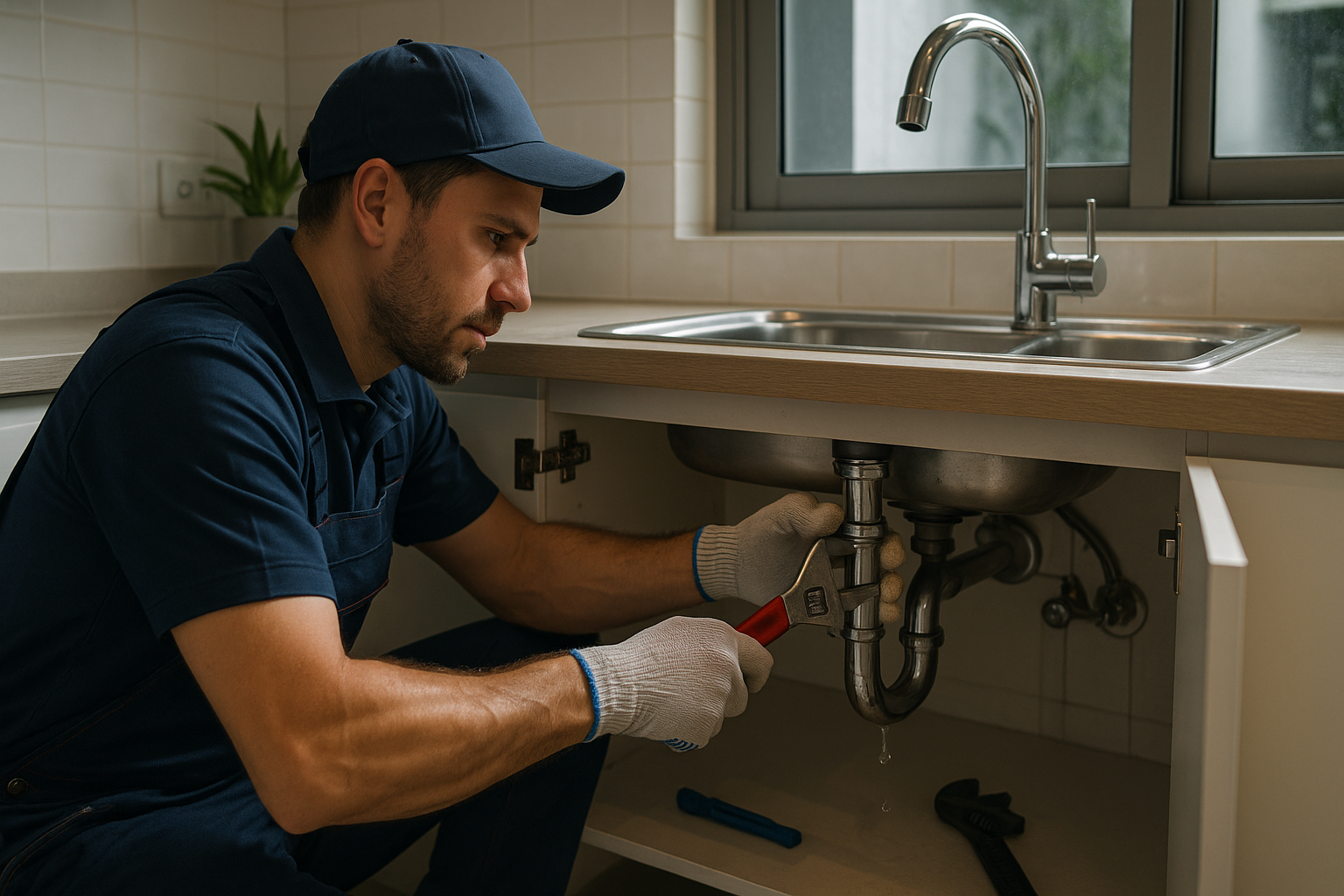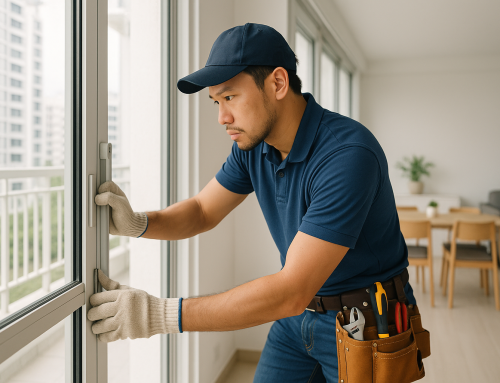Home repairs and maintenance are an essential part of keeping your property safe, functional, and visually appealing. Whether you’re dealing with a leaky tap, a broken cabinet, or electrical issues, hiring a professional handyman can save you time, effort, and stress. However, many homeowners are unsure of what to expect during a handyman visit. Understanding the process can help you prepare, ensure a smooth experience, and maximize the value of the service.
This comprehensive checklist will guide you through everything you should expect when a handyman visits your home, from initial communication to project completion.
 1. Pre-Visit Communication
1. Pre-Visit Communication
A professional handyman will typically start with a conversation before coming to your property. This is an important step to clarify your needs and set expectations.
Key Elements of Pre-Visit Communication:
-
Understanding the Issue: You should clearly explain the problem or task at hand, including any relevant details such as duration of the issue, location, and previous attempts to fix it.
-
Scheduling: The handyman will confirm a convenient time for the visit. Punctuality is often part of their professional service.
-
Cost Estimate: Many handymen provide a preliminary estimate based on your description. While the final cost may vary, this gives you an idea of the expected charges.
-
Tools and Materials: The handyman may ask if you already have materials or if they will bring their own. This ensures they are fully prepared to complete the job efficiently.
2. Arrival and Introduction
When the handyman arrives, a professional will:
-
Introduce themselves and provide identification if necessary.
-
Explain the plan for the visit, including the steps they will take.
-
Discuss any potential issues or limitations they may foresee.
This introduction sets the tone for trust and professionalism. A reliable handyman will take the time to make you feel confident about the work they will perform.
 3. Assessment of the Task
3. Assessment of the Task
Before starting the actual work, the handyman will usually assess the problem thoroughly. This step is crucial to ensure that the solution is effective and long-lasting.
What to Expect During Assessment:
-
Inspection of the Area: The handyman will check the location of the issue, looking for hidden problems such as water damage, faulty wiring, or structural weaknesses.
-
Diagnosis: They will identify the root cause rather than just treating the symptoms. For example, a leaking tap might be due to a worn-out washer or an underlying pipe issue.
-
Material Requirements: The handyman may determine what tools or materials are needed to complete the task correctly.
4. Detailed Quotation
A professional handyman often provides a detailed quotation before starting the repair. This helps prevent misunderstandings and ensures transparency.
What a Detailed Quotation Includes:
-
Breakdown of Labor Costs: Hourly rate or fixed price for the work.
-
Cost of Materials: Any replacement parts, paints, or consumables required.
-
Time Estimate: How long the repair or task is expected to take.
-
Warranty or Guarantee: Some handymen offer short-term guarantees for their work.
Having a clear quotation ensures you know exactly what you are paying for and avoids surprise charges.
5. Preparation of the Workspace
A professional handyman will prepare the workspace before starting the repair. This demonstrates efficiency and consideration for your home.
Typical Preparation Steps:
-
Clearing the Area: Moving furniture or objects that might obstruct the work.
-
Protecting Surfaces: Using mats, covers, or tape to prevent scratches, stains, or dust damage.
-
Safety Precautions: Ensuring proper ventilation, turning off electricity or water if necessary, and using personal protective equipment.
This step not only protects your property but also ensures the repair proceeds smoothly and safely.
6. Performing the Repair or Task
Once the assessment and preparation are complete, the handyman begins the actual work.
What to Expect During the Repair:
-
Professional Techniques: A skilled handyman uses proper methods and tools to ensure durability and safety.
-
Attention to Detail: Even small tasks like tightening screws or sealing edges are done meticulously.
-
Communication: A professional will update you on progress, especially if unexpected issues arise.
-
Time Management: The task is performed efficiently without unnecessary delays.
Remember, the goal is not just to fix the problem temporarily but to provide a long-lasting solution.
7. Testing and Verification
After completing the repair, a responsible handyman will test the work to ensure it functions correctly.
Examples of Verification:
-
Checking a faucet for leaks after replacement or repair.
-
Testing electrical outlets or switches to confirm proper operation.
-
Ensuring furniture, doors, or cabinets operate smoothly.
This step guarantees that the issue has been resolved completely and professionally.
8. Clean-Up
One of the hallmarks of a professional handyman is leaving the workspace clean and tidy.
Clean-Up Practices:
-
Removing debris, dust, or packaging materials.
-
Returning furniture or items to their original positions.
-
Sweeping or wiping surfaces if necessary.
A thorough clean-up demonstrates respect for your home and leaves a positive impression.
9. Post-Visit Guidance
A professional handyman often provides guidance after the job is completed. This helps you maintain the repair and prevent future issues.
What You Might Receive:
-
Maintenance Tips: How to care for repaired items or prevent recurring problems.
-
Follow-Up Recommendations: When to schedule future maintenance checks.
-
Warranty Information: Details about guarantees or support for the work done.
Clear post-visit instructions ensure you get maximum value from the service.
10. Payment and Feedback
Finally, the visit concludes with payment and possibly feedback.
What to Expect:
-
Transparent Billing: Confirming that the final cost matches the agreed quotation.
-
Payment Options: Cash, bank transfer, or digital payment options.
-
Feedback Opportunity: Some services request a review or rating to improve service quality.
Being informed about payment and leaving constructive feedback helps maintain a professional relationship for future needs.
 Bonus Tips for a Smooth Handyman Visit
Bonus Tips for a Smooth Handyman Visit
-
List Your Tasks in Advance: Write down all issues you want to address to avoid forgetting anything.
-
Prepare Questions: Ask about costs, timeframes, or potential risks upfront.
-
Secure Valuables: Keep fragile or valuable items away from the work area.
-
Stay Accessible: Be available to answer questions or approve additional work if needed.
Conclusion
A handyman visit can save you time, effort, and stress when done properly. By knowing what to expect—from pre-visit communication and assessment to repair, testing, and clean-up—you can ensure a smooth and professional experience.
Following this complete checklist will help you get the best results, protect your home, and maintain a reliable relationship with your handyman service provider.
Whether it’s a small DIY-level fix or a complex repair, understanding the process allows you to make informed decisions, maximize efficiency, and ensure lasting solutions.



